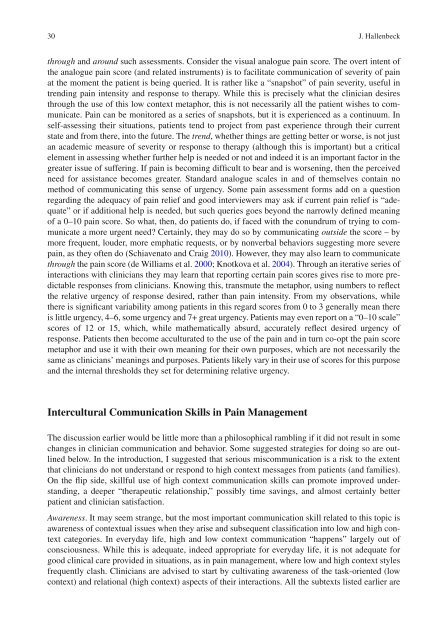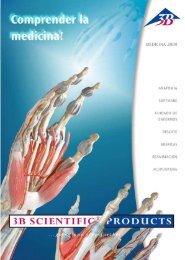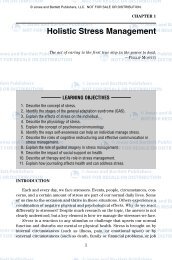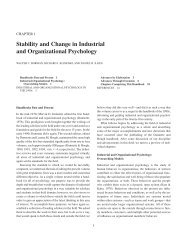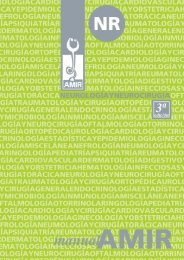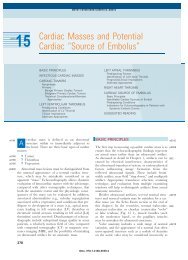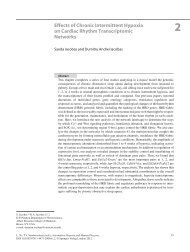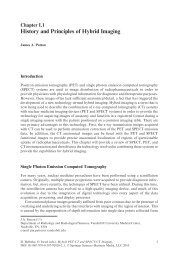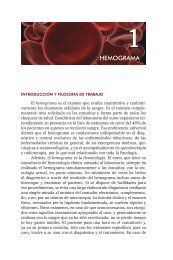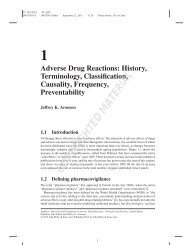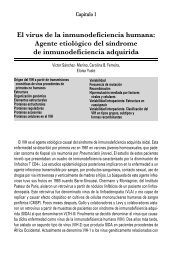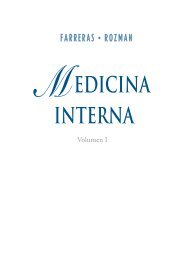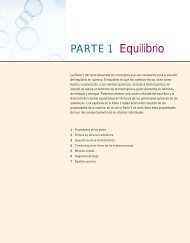Download Sample pages 1 (pdf, 195 kB) - Springer
Download Sample pages 1 (pdf, 195 kB) - Springer
Download Sample pages 1 (pdf, 195 kB) - Springer
You also want an ePaper? Increase the reach of your titles
YUMPU automatically turns print PDFs into web optimized ePapers that Google loves.
30 J. Hallenbeck<br />
through and around such assessments. Consider the visual analogue pain score . The overt intent of<br />
the analogue pain score (and related instruments) is to facilitate communication of severity of pain<br />
at the moment the patient is being queried. It is rather like a “snapshot” of pain severity, useful in<br />
trending pain intensity and response to therapy. While this is precisely what the clinician desires<br />
through the use of this low context metaphor, this is not necessarily all the patient wishes to communicate.<br />
Pain can be monitored as a series of snapshots, but it is experienced as a continuum. In<br />
self-assessing their situations, patients tend to project from past experience through their current<br />
state and from there, into the future. The trend , whether things are getting better or worse, is not just<br />
an academic measure of severity or response to therapy (although this is important) but a critical<br />
element in assessing whether further help is needed or not and indeed it is an important factor in the<br />
greater issue of suffering. If pain is becoming diffi cult to bear and is worsening, then the perceived<br />
need for assistance becomes greater. Standard analogue scales in and of themselves contain no<br />
method of communicating this sense of urgency. Some pain assessment forms add on a question<br />
regarding the adequacy of pain relief and good interviewers may ask if current pain relief is “adequate”<br />
or if additional help is needed, but such queries goes beyond the narrowly defi ned meaning<br />
of a 0–10 pain score. So what, then, do patients do, if faced with the conundrum of trying to communicate<br />
a more urgent need? Certainly, they may do so by communicating outside the score – by<br />
more frequent, louder, more emphatic requests, or by nonverbal behaviors suggesting more severe<br />
pain, as they often do (Schiavenato and Craig 2010 ) . However, they may also learn to communicate<br />
through the pain score (de Williams et al. 2000 ; Knotkova et al. 2004 ) . Through an iterative series of<br />
interactions with clinicians they may learn that reporting certain pain scores gives rise to more predictable<br />
responses from clinicians. Knowing this, transmute the metaphor, using numbers to refl ect<br />
the relative urgency of response desired, rather than pain intensity. From my observations, while<br />
there is signifi cant variability among patients in this regard scores from 0 to 3 generally mean there<br />
is little urgency, 4–6, some urgency and 7+ great urgency. Patients may even report on a “0–10 scale”<br />
scores of 12 or 15, which, while mathematically absurd, accurately refl ect desired urgency of<br />
response. Patients then become acculturated to the use of the pain and in turn co-opt the pain score<br />
metaphor and use it with their own meaning for their own purposes, which are not necessarily the<br />
same as clinicians’ meanings and purposes. Patients likely vary in their use of scores for this purpose<br />
and the internal thresholds they set for determining relative urgency.<br />
Intercultural Communication Skills in Pain Management<br />
The discussion earlier would be little more than a philosophical rambling if it did not result in some<br />
changes in clinician communication and behavior. Some suggested strategies for doing so are outlined<br />
below. In the introduction, I suggested that serious miscommunication is a risk to the extent<br />
that clinicians do not understand or respond to high context messages from patients (and families).<br />
On the fl ip side, skillful use of high context communication skills can promote improved understanding,<br />
a deeper “therapeutic relationship,” possibly time savings, and almost certainly better<br />
patient and clinician satisfaction.<br />
Awareness . It may seem strange, but the most important communication skill related to this topic is<br />
awareness of contextual issues when they arise and subsequent classifi cation into low and high context<br />
categories. In everyday life, high and low context communication “happens” largely out of<br />
consciousness. While this is adequate, indeed appropriate for everyday life, it is not adequate for<br />
good clinical care provided in situations, as in pain management, where low and high context styles<br />
frequently clash. Clinicians are advised to start by cultivating awareness of the task-oriented (low<br />
context) and relational (high context) aspects of their interactions. All the subtexts listed earlier are


